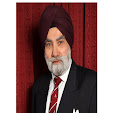“
Having conquered Khurasan, Babar, the Mughal, has terrified Hindostan (India). O
my Lord, do You not feel responsible [because You are the Creator] when You send
the invader Mughal as the Angel of Death?
When people are screaming in agony, do You not feel any compassion for
their suffering O My Lord ?”
(Guru
Nanak Sahib Sri Guru Granth Sahib (Raag
Asa Ang 360)
Horrified
by the terror unleashed by Babur, the Mughal invader who descended on India from
the North-West with his hordes, Guru
Nanak Sahib turned to the Creator Lord
for divine intervention. The questioning
complaint and plea is that of an innocent child turning to own Father for help.
How
relevant is Guru Nanak Sahib’s plea invoking divine mercy today, as we watch
the poignant scenes on our television screens of terror being inflicted on
innocent people in the name of religion. We have seen hundreds of thousands fleeing the
terror unleashed by the forces of the Islamic State (IS) and other belligerents
in the Middles East, all in the name of religion. Videos released by boastful religious zealots show throats of innocent captives being slit
as “sacred” religious passages are recited! Jihadi fighters carrying naked swords, herd
women and children like slaves. Hapless
victims have been buried alive to save ammunition. These are scenes reminiscent of the middle
ages.
We
saw indiscriminate rockets rain down on the towns of Gaza killing hundreds of
innocent civilians. Young and old,
little children and women, none were spared
In
the 21st Century we watch helplessly as terror and oppression continue to be inflicted by misguided religion.
That is what Guru Nanak Sahib (1469 – 1539) saw in his times and founded
his religion on compassion (daya).
He
told the misguided cruel Muslim ruler to be a true follower of Islam, “A Muslim
is he who is kind hearted” (SGGS Ang 1084)
He
was touched by the social oppression justified by the degrading caste system
sanctioned by the Manuwadic varan ashram.
He told the Hindu to wear the jeneu
(sacred thread symbolic of caste) made from the cotton of compassion. He told the high caste Brahmin, “Make
compassion (daya) the cotton,
contentment the thread, continence the knot and truth the twist” of your sacred thread. (SGGS Ang 471)
He
told Hindu and the Islamic ruler of his day, “In the next world caste and power
count for nothing” (SGGS Ang 469
Guru
Sahib’s compassion had no limits. At a
very young age, knowingly, he invoked his father’s wrath by spending all the money
he was given to do business on food, to feed the hungry.
Thus,
the Light (Jyote) of Guru Nanak passed through ten human forms to build a
theo-social system, and the egalitarian
Sikh institutions of Sangat-Pangat (Congregation and indiscriminate community
kitchen serving all), and the Khalsa
Panth were built on compassion.
It
is no co-incidence that the first of the Beloved Five, the Panj Pyaray, was
named Daya Singh (the Compassionate Lion) the Khalsa. Even the sword, the last-resort defender of the
weak and the defenceless was named Kirpaan,
the compassionate defender of human
dignity and honour. Even the Tenth Guru
Nanak, Guru Gobind Singh’s use of arms for a just cause showed compassion in
the field of battle by not only not striking a fallen foe but
offering him water and medical care.
Even the Khalsa ultimate objective of halemi raj (regime) is built on compassion: a regime in which no
one inflicts pain on another. (SGGS Ang 74
)
Today
we live in a world which is continually being brought to the brink of disaster
due to lack of compassion. Religion is misinterpreted
to spread terror and communal disharmony.
Following in the footsteps of Guru Nanak Sahib, we pray to the Timesless
Lord, to save the burning world; to save all humankind no matter which
religious path is followed.
In
our Ardaas (supplication) we recite Guru Nanak Sahib’s concluding prayer:
“May
all enjoy well-being through Your [Compassionate] Will.”
Gurmukh
Singh
©
Copyright Gurmukh Singh (U.K.)
E-mail: sewauk2005@yahoo.co.uk
Please acknowledge quotations from this article
Articles may be published subject to prior approval by the author
E-mail: sewauk2005@yahoo.co.uk
Please acknowledge quotations from this article
Articles may be published subject to prior approval by the author

No comments:
Post a Comment